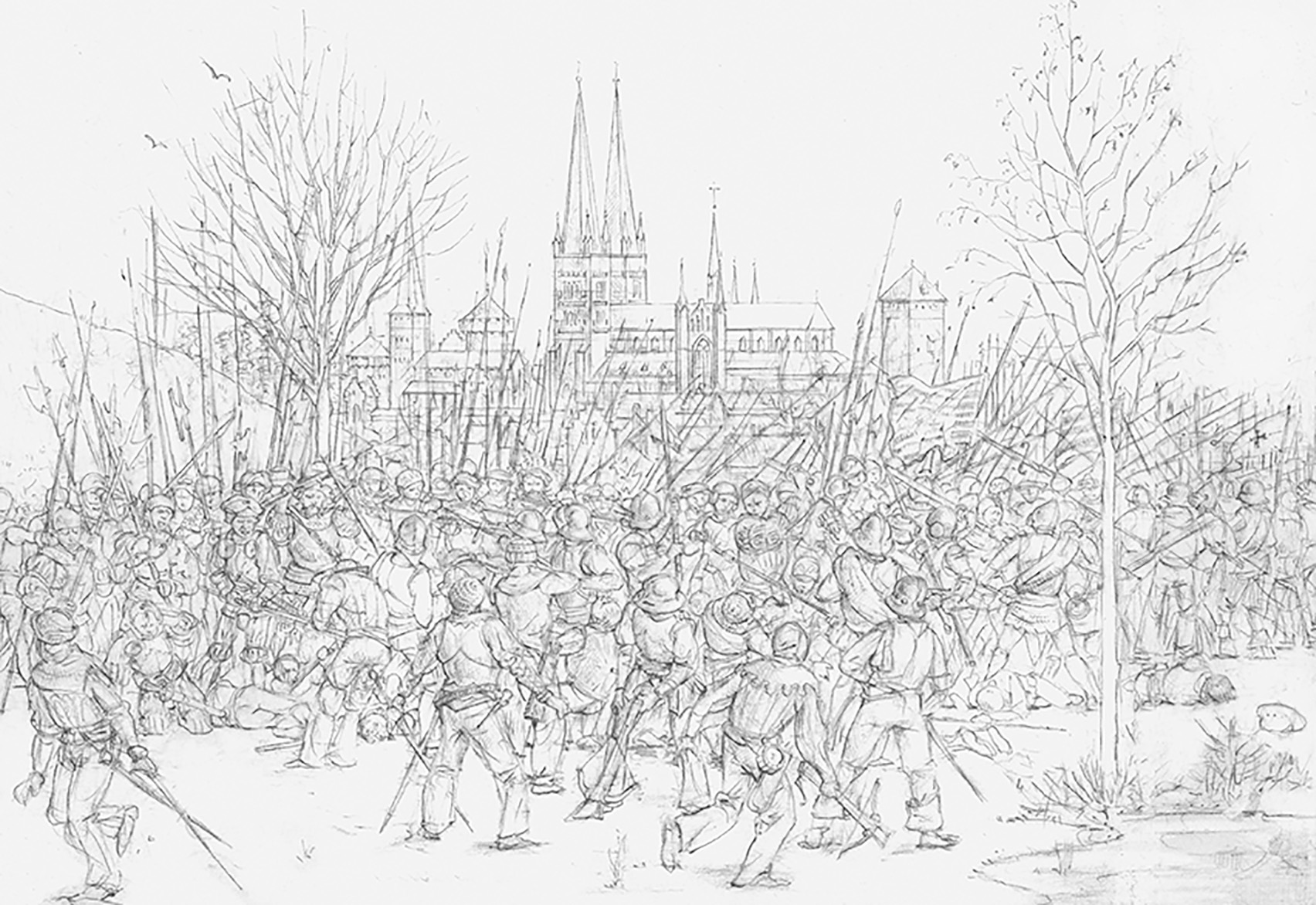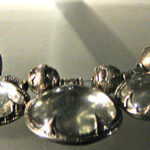It was Good Friday, 6 April 1520, and the Swedish peasant troops were about to attack the Danish troops stationed around Uppsala.
When the battle broke, the Danes were taken by surprise. The weather was certainly not helping. The horses kept stumbling on the slippery ground, their firearms were useless, and the Swedes clearly wanted blood. The Danish forces were not actually Danish themselves, only hired mercenaries, most coming from France, Germany, or Scotland. But they were professionals, and they were not about to back down. By the end of the day they would lose some 2000 men, but the Swedes were going to lose many more. Training and discipline would lead the mercenaries to victory over the poorly-armed and untrained Swedish peasantry. The Swedes would eventually break and try to run, and that was when the mercenaries would get payback for their fallen comrades. That was when the cavalry would show its superiority.
While the Swedes began the attack with a strong advantage, at some point, the tide of the battle turned and the Swedes were defeated. Historical sources state that the Uppsala’s own Archbishop Gustav Trolle, who had treacherously worked to support the Danish invasion, even went so far as to order the fallen Swedes to be left in bogs for the dogs and ravens, to deny them a proper Christian burial.
A mass grave comprised of the skeletal remains of 60 people (mostly men, with perhaps a few women) uncovered in Uppsala has corroborated many of the events of this brutal day as described in the history books. Taphonomic investigations tell us that when the bodies were finally buried, many of them were already in various states of decomposition. The grave contained some whole skeletons, while others were reduced to random limbs and articulated sections, as well as co-mingled remains of multiple individuals tossed together. It is unlikely that the grave was disturbed, or that the remains were mutilated deliberately; we must thus conclude that Archbishop Trolle’s command to leave the rotting corpses was adhered to, with the mixture occurring after the partially-decomposed remains were eventually collected for inhumation. While this might be seen as a truly horrible act today (and probably was even in its own time), it was not an isolated act of hostility within this time period in Europe. It must be noted, however, that less than five of the bodies had any signs of animal scavenging, and it was quite minimal at that. This indicates that the bodies were left above ground long enough to decompose, but not long enough to be truly set upon by hungry scavengers—Trolle’s wish to leave the Swedes to the dogs was never truly fulfilled.

From what archaeologists could observe from 52 skulls, 60% showed evidence of sharp force trauma,—from these, they averaged about 2.7 wounds per person. Some heads had as many as 5 cuts, implying that they could have been outnumbered, that the Danes were very angry and went for overkill, and/or that the Swedes had little to no protective headwear. Most of the blows came from above, though roughly a quarter were side-to-side strikes and a few came from below. The sideways cuts were evenly distributed to both sides, and most of them were at the back of the head, not the front. Most of the blows penetrated the cranial vault. Few showed signs of post-cranial trauma (injury below the head), though of course a wound to the stomach or any other soft part of the body would not be visible in the skeleton. One of these was a man who received a blow to the neck from behind, and was decapitated. The lack of defensive injuries, again, strongly suggests that many of these injuries were not sustained in face-to-face combat. The most logical explanation for this is that those from the mass grave were trying to run away when they were slain. They understood that they could not win against the professional mercenaries and tried in vain to save themselves. Given the angle of the blows, it is possible that when the Swedes turned to run, the Danish cavalry rushed in and cut them down.

Only a few short months later, the infamous Stockholm Bloodbath took place. 1520 was not a good year for the Swedes.
The Stockholm Bloodbath has become well-known as one of the most infamous moments in Swedish history, and has therefore attracted the bulk of the public and academic attention for the year 1520, leaving the Battle of Good Friday in relative obscurity. Though these two events are intrinsically linked, it is unclear exactly how the mass grave connects to the later event.
Special thanks to Anna Ölund at Upplandmuseet for her assistance in providing images for this article.
Cover image: The day before the Battle of Good Friday. Illustration by Þórhallur Þráinsson, featured in Långfredagsslaget: en arkeologisk historia, edited by Bent Syse. Upplandsmuseet. 2003.
Further reading:
Kjellström, A. 2005. A Sixteenth-Century Warrior Grave from Uppsala, Sweden: The Battle of Good Friday. International Journal of Osteoarchaeology, 15: 23-50.
Syse, B. 2003. Långfredagsslaget: en arkeologisk historia. Upplandsmuseet, Uppsala.
About the author
Cindy Levesque
Cindy G Levesque is a biological anthropologist and archaeologist from New Brunswick, Canada. She completed her Bachelor of Arts degree at the University of New Brunswick, and her Master of Science degree at Sheffield University in England. She currently lives in Uppsala, Sweden.


